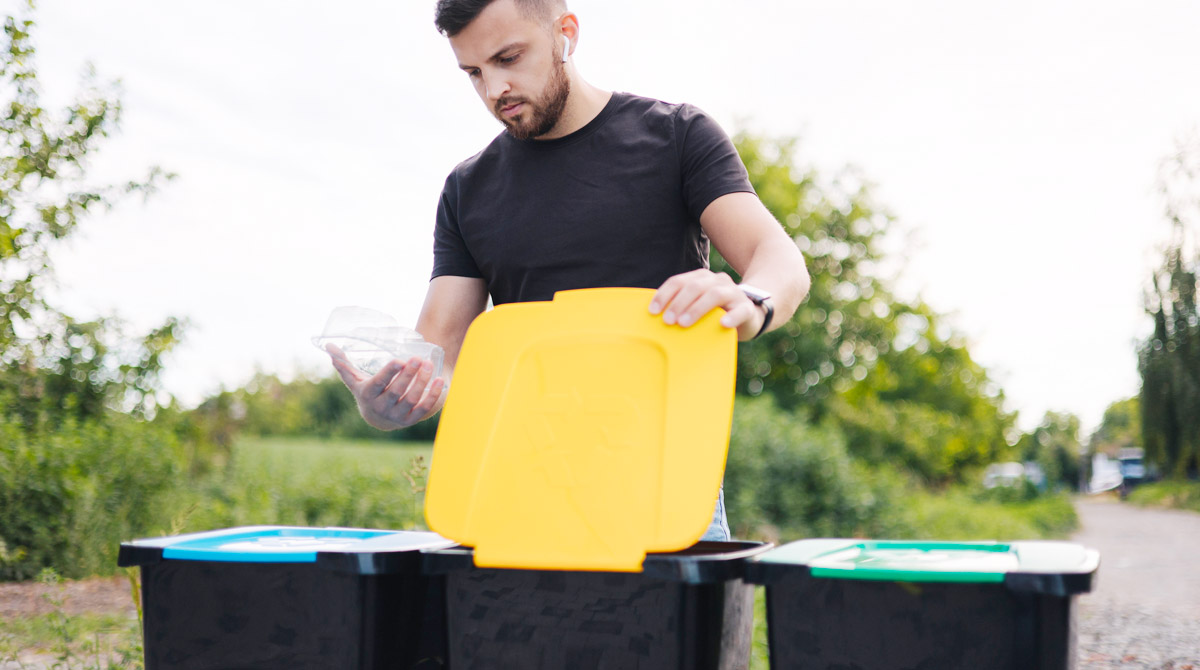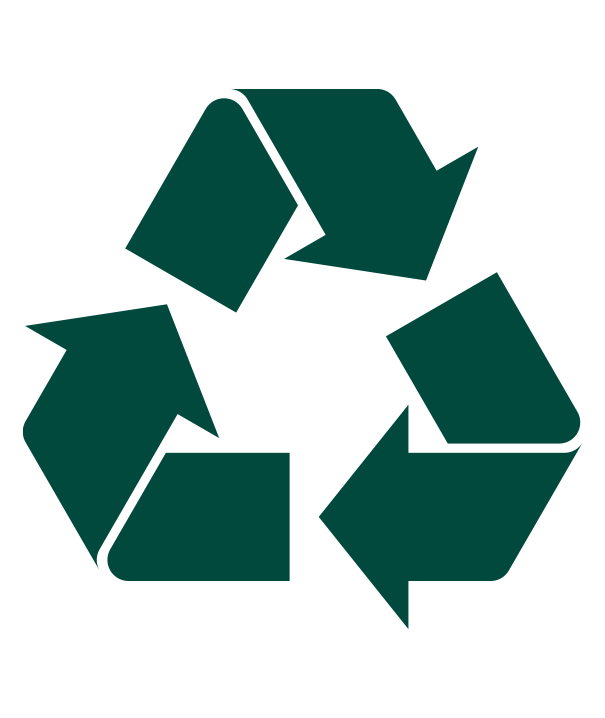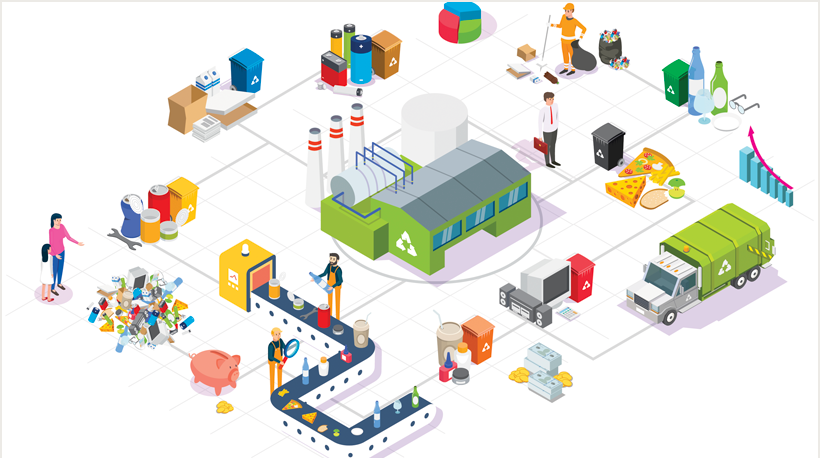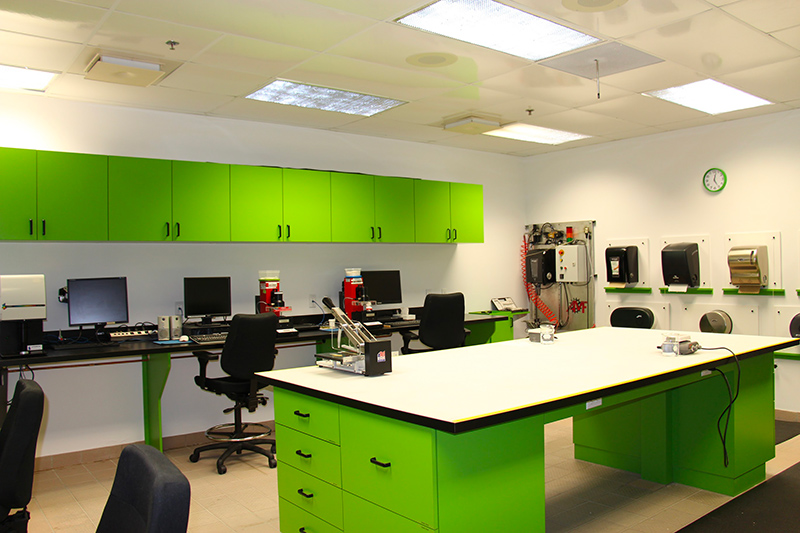A world of factors must be considered before answering a seemingly simple question: Is this packaging recyclable or not?

The answer requires an analysis that covers a lot of ground: the area where the packaging will be disposed, its composition of raw materials, additives and contaminants, the size of the demand, and many more factors that can influence its recyclability potential.

What does "recyclable" mean?
According to ISO 14021, the term "recyclable" refers to the characteristic of a product that can be diverted from the waste stream by the available processes and programs. It must also be collected, processed and returned to serve as an input.
Many, if not all, types of materials have the potential to be recycled. The issue: for various reasons related to collection, processing and end markets, some are not. This is the gap between technical recycling and actual recycling.
The actual-recycling rate of materials corresponds to their potential to be used as a raw material. This is the distinction between the terms "recovered" (collection) and "recycled" (processing). The recycling rate is determined by demand from recyclers.

In general, a product is recyclable if it can be recovered where it is disposed by the user, the purity of the material removed is sufficient to make a new product and if a recycler is willing to do so.
The region, a determining factor in the equation
It's essential to understand the market where the user will dispose of the packaging. A container may be easily recycled in some regions, but end up in landfills in others. The presence of sufficient recovery facilities and the quality of the sorting are determining regional factors.
The collectors' markets and customers also differ from region to region. The demand for a material normally has the effect of stimulating its sorting and sale in the local market. Conversely, some materials are easily recycled but the process is so expensive that they struggle to compete with virgin materials.
The "Green Guidelines" published by the Federal Trade Commission (FTC), clearly state that a package must be actually recycled at a minimum of 60% in a given territory to be considered recyclable. Otherwise, the claims about recyclability may be considered false.
Favouring material purity
The package's components greatly influence its recyclability. Recycling centres are generally equipped to sort cardboard, paper, aluminum and plastics such as PETE. The high demand for these materials increases the possibilities for them to be reused and favours their circulation.
However, one important factor to consider is the quantity of materials used to make the packaging. Single-material packaging, i.e. made of only one raw material, is generally easier to recycle.
For example, a cardboard box sorted and baled with similar boxes would easily find a buyer.
Cardboard recyclers, such as Cascades, integrate these bales of old cardboard directly into their equipment to transform the cardboard back into pulp.
So-called multi-material packaging, consisting of different materials layered on top of each other, poses additional challenges. In the absence of standardized labeling regulations, sorting this packaging is more complex. It's often up to the recyclers to invest in specialized equipment to separate the different layers and obtain the purity of the material they are looking for.
The fibres in some packaging can sometimes be separated from other materials through a pulping process. Repulping is possible by using a pulper and scrubbers. Cascades uses this method. Cascades has been using recycled paperboard for several decades and its processes are constantly evolving.
Food packaging often requires the addition of a protective coating to resist moisture and protect the food. Coating solutions that are recyclable, compostable and repulpable can be effective alternatives to some of the more difficult to recycle barrier films.
The impact of additives and contaminants
The presence, type and quantity of contaminants and additives can also affect a packaging product's recyclability. Glues, printing inks, pins, labels, composite materials, food residues, etc. can influence its recyclability rate.
A small level of contamination is usually not an issue. But on a larger scale, it can pose challenges for recyclers, even requiring them to make significant investments. In general, material purity is a purchasing incentive for recyclers.
Revealing tests
From a technical point of view, how do you ensure that a package has the physical characteristics to be recycled?
For cardboard in particular, the quality of recovered fibres can be assessed by four different laboratory tests: the compression and bursting strength of the paper made from these recycled fibres, the paper's water resistance and the amount of contaminants it contains.
Repulpability is evaluated by measuring the fibre yield, using laboratory pulpers and sieves. To be considered repulpable and thus attractive raw material, 85% of the fibres must be recovered.
Microscopes and analyzers are also used to measure the sticky materials, commonly called "stickies". The stickies often come from labels and adhesive tapes fixed on the boxes.
Reject percentage tests and plastics composition analyses can also be used. In short, a wide range of laboratory tests can be done in addition to those possible in the field: follow-up tests in the plants and evaluations in the sorting centres, which are very revealing of a material's behaviour at the sorting and manufacturing stages.

Certain laboratory, plant and sorting centre tests provide enlightening answers. Cascades has its own sorting centres, manufacturing plants and a research and development centr, equipped to test recyclability right in its facilities, providing customers with a 360-degree expertise.
![]()

Subject matter experts
As a manufacturer, collector and recycler, Cascades has a strong circular business model that gives it in-depth expertise in recyclability. Its research and development centre has state-of-the-art equipment to conduct the related testing. Its experts are available and have the tools and market knowledge to assist customers in developing recyclable products.